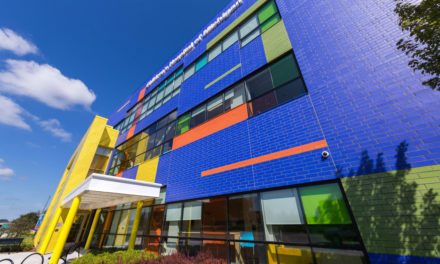With a finger on the pulse of the new decade, the American Society of Interior Designers (ASID) has released its 2020 Outlook and State of Interior Design report. This annual compendium takes a deep dive into the interior design industry, business and profession to provide a comprehensive outlook for the year ahead and guide interior designers on how critical moving parts such as the U.S. economy, U.S. construction activity and various trends, apply to their business. The report also offers future insights, examining the symbiotic relationship between culture and design. By arming designers with the tools they need for success, ASID empowers the industry and propels it to the next height of innovation.
“Design is central to our lives and affects us every day,” comments Randy Fiser, HON. FASID, ASID CEO. “By examining micro- and macro-trends alike, we encourage designers to understand how seemingly extraneous factors, such as the impact of coronavirus on the global economy, can have a profound effect on their practice. The Society’s research department aims to strengthen the design community by keeping them informed on all facets of the industry, and the 2020 Outlook and State of Interior Design report demonstrates that commitment to bolstering the community with knowledge. We are especially excited to share the widening range of businesses employing interior designers and the increased awareness of well-being— proving that design has the power to impact lives.”
The report opens with research and insights on the current state of the industry to set the tone for what lies ahead. Highlights are:
- Industries employing interior designers have diversified over time.
- Projected firm revenues/sales have seen an average eight percent annual growth rate during the past decade.
- Average annual salary and hourly wages increased; well above the national average, but slightly below the average inflation rate.
- The total number of interior design students have decreased over time and raise challenges throughout the profession.
Additionally, the report looks holistically at the U.S. economy and construction industries to identify applicable indicators for the design world. It notes that although the threat of an immediate recession has subsided, growth in 2020 will slow down, but still to a sustainable level. Select findings are:
- Tariffs on products have significantly impacted the interior design industry, and will continue to cause disruption.
- The housing market is generally healthy, but faces a number of challenges.
- Construction spending activity will increase in 2020 for single-family construction, residential improvements, and educational facilities.
Macro-trends that occur around the world and the U.S., and those that relate to changes in lifestyles, are important for interior designers to understand and apply in practice. The report further examines the trends and implications spurred by the aforementioned factors. Knowledge, skills and applications interior designers should keep up with in order to stay competitive are also included in this section. Key trends include:
- Organizations are focusing on human-oriented outcomes as part of their business agenda and are turning to design for solutions.
- Choices in living styles are transcending generations.
- New technologies are improving productivity, management, and occupant experience.
- Wellness has become a way of life with people taking on a proactive approach.
- Designers are accessing neuroscience to better understand how and why humans react to environmental stimuli in built spaces.
Lastly, the report looks ahead to future insights on the inextricable connection between design and culture. Sourced from conversations with a diverse set of designers and industry leaders, ASID explains that the significance of culture and its evolution can help form the basis for how to better service people-centric culture through design. Various factors used to approach culture, such as location, time, experience, technology and demographics can each be viewed in isolation, but together, they form the foundation for a more holistic approach to creating, supporting and ultimately preserving culture. It concludes that the design community has an immense opportunity to not only interpret, support and preserve culture, but also help create culture and space in service to humanity so that forthcoming generations will understand those who shaped the world before them.
The report is now available for download to ASID members free of charge, and for $249.95 for non-members. Media may access a full copy of the report by emailing lucy@novitapr.com.




